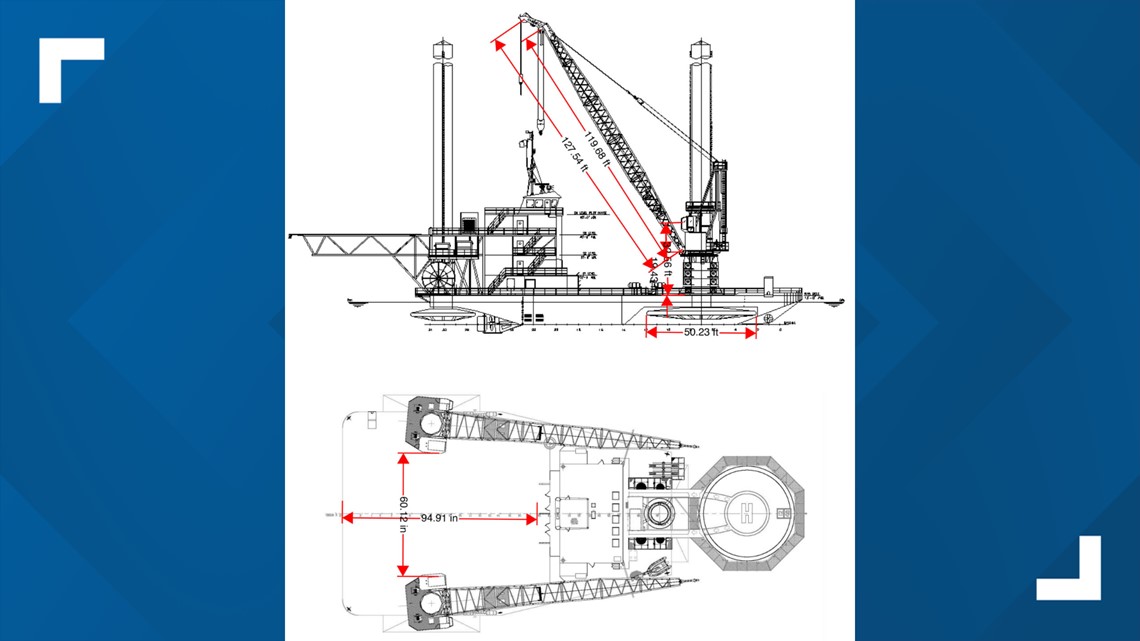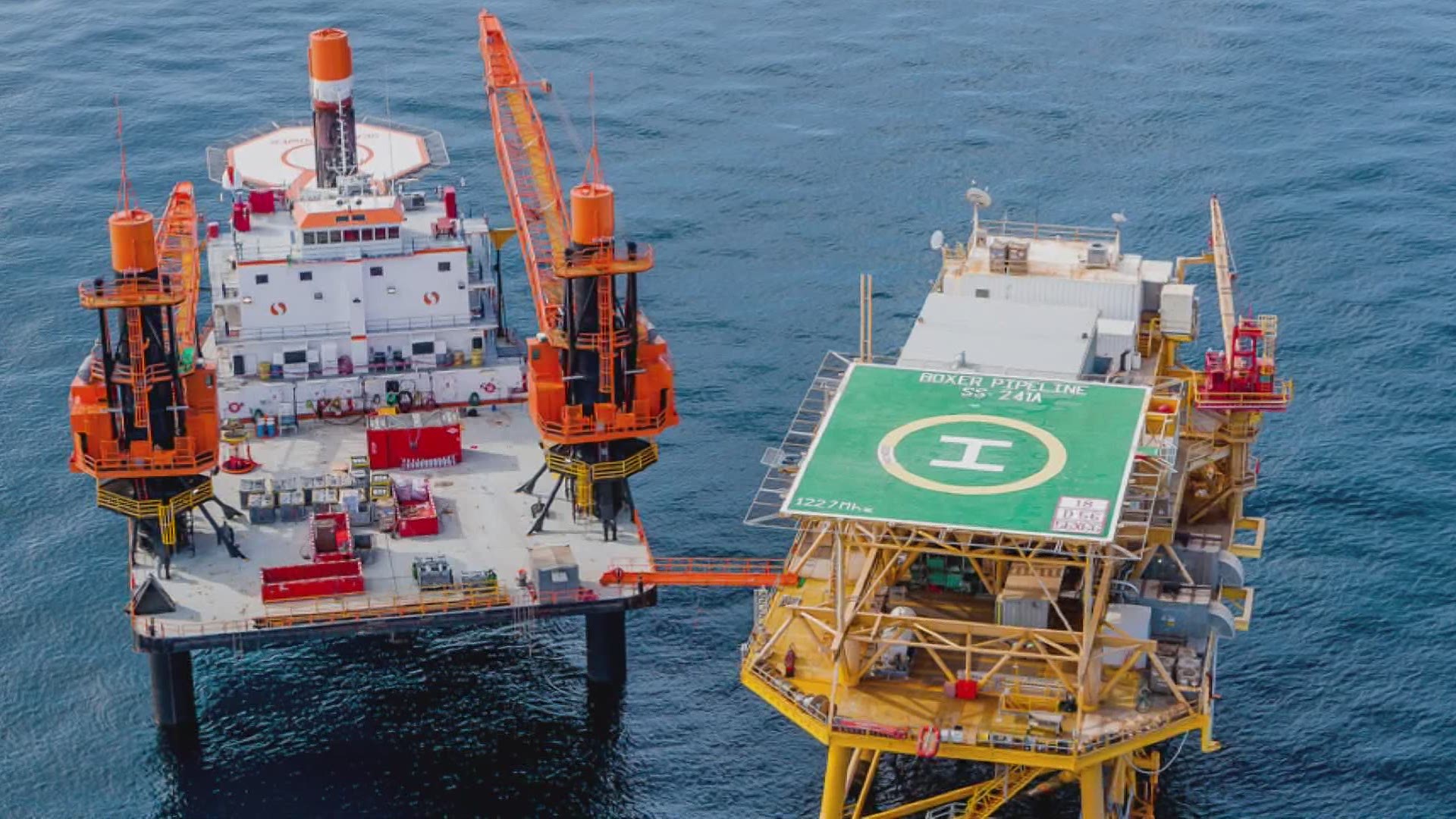PORT FOURCHON, La. — Since the Seacor Power lift boat capsized Tuesday afternoon, many have been asking what exactly a commercial lift boat is and what it does.
Lift boats transform into offshore platforms. In the Gulf of Mexico, there are lots of these boats as they help support the oil and gas industry. According to Seacor’s website, the 129-foot Seacore Power vessel can work in depths up to 195 feet and has two cranes with 120-foot booms on each.
“They are mainly used for their cranes,” said Todd Michael, senior marine inspector for the U.S. Coast Guard. “It’s a big part of what they do offshore, lifting personnel, lifting goods, lifting offshore equipment onto rigs.”
The boat becomes a platform by dropping three legs down into the seafloor and those legs keep the platform steady while crews work.
“As those legs reach the seafloor, the platform begins to rise and those vessels can be stationary and do work offshore,” said Capt. Will Watson, with the U.S. Coast Guard.
A picture of the Seacor Power after it capsized shows one of the legs out in the air.
“What happens is, the vessel sails out to the worksite with its legs up in the air and lowers the legs to sit on the bottom of the ocean,” said Martin Davies, director of Tulane Maritime Law Center. “The very striking image you saw of that thing sticking out of the water… that’s one of the legs.”


It looks like this vessel was on its way to a platform about 40 miles from Venice. It only made it seven miles and did not have time to stabilize before tipping over.
According to Seacor’s website, the ship was built in 2002 and carries nearly 40,500 gallons of fuel oil. The coast guard said there were minimal environmental impacts from the ship capsizing.

